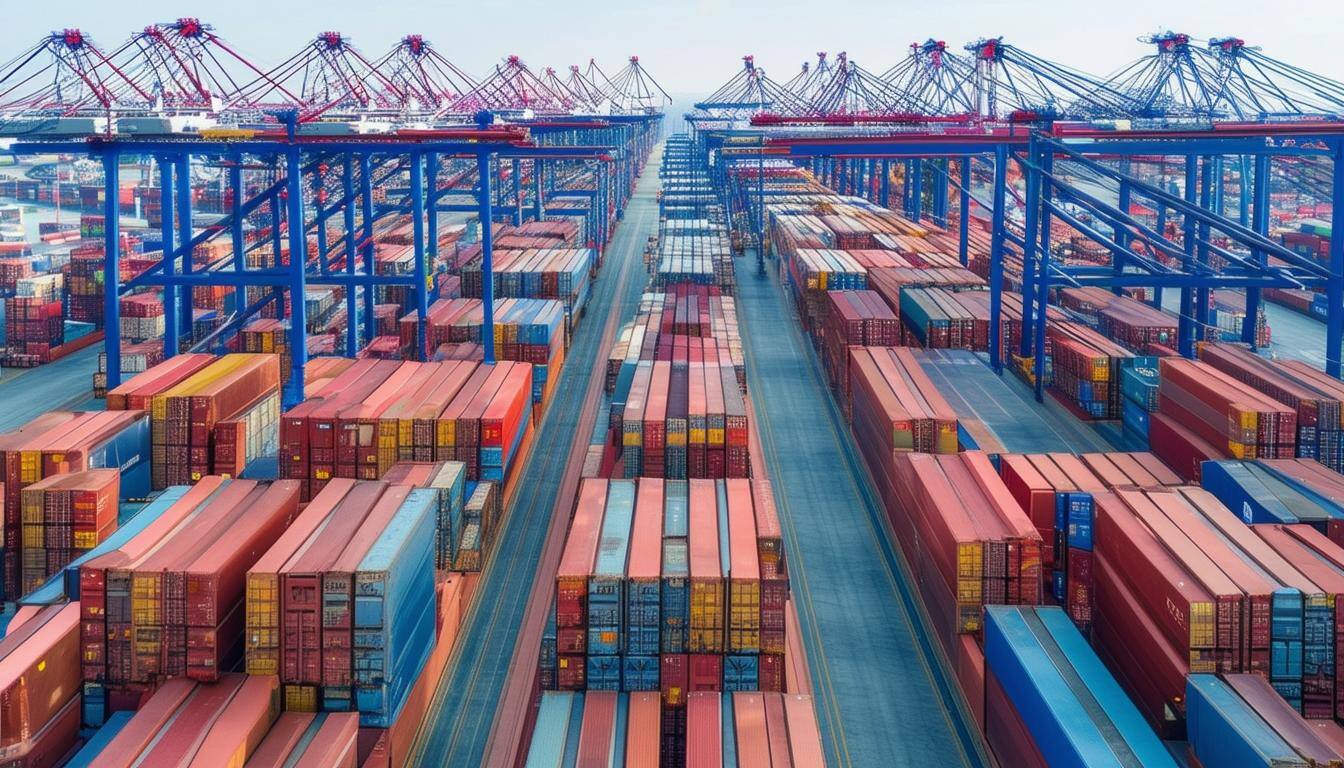This article first appeared on https://www.lanacion.com.ar/
The president-elect proposed a 25% tariff on imports from Mexico and Canada and an additional 10% on those from China as a measure to require action against the production of the opioid; The effectiveness of these taxes is in doubt
U.S. President-elect Donald Trump announced last week that when he takes office he will impose a 25% tariff on imports from Canada and Mexico, in addition to an additional 10% tax on products from China, to clamp down on drugs, particularly fentanyl, and migrants crossing the border.
Reactions were swift: the Chinese embassy in Washington described the proposal as "arbitrary" and warned that these sanctions deteriorate cooperation between the two countries. For her part, Claudia Sheinbaum, president of Mexico, wrote a letter to Trump in which she defended the need to work together instead of resorting to trade threats and the next day they spoke by phone. "It is not with tariffs that this problem, which is of consumption and public health in your country, will be solved," he said.
The fentanyl crisis has infiltrated the bowels of the United States: the bases of the pharmaceutical industry, clandestine laboratories and the consumption dynamics of millions of people. This cheap white powder that is injected, smoked or taken in pills kills more than 200 people a day, according to the latest official data, from 2022. Some experts point out that the problem is uncontrolled consumption, others illegal production and distribution.
What is fentanyl and why is it so problematic for the United States?
Fentanyl is a synthetic opioid up to 50 times more potent than heroin. Originally, it was developed as a painkiller to treat extreme pain, but it soon infiltrated the black market, with devastating consequences. Michael Brown, a former agent of the Drug Enforcement Administration (DEA) and current global director of counternarcotics technology in Rigaku, explained to LA NACION that the root of this crisis is in the boom in prescription opioids.
"It all starts with Purdue Pharma, the company that produced Oxycontin, a powerful opioid painkiller prescribed to treat chronic pain. For nearly 25 years, they distributed this painkiller, essentially synthetic heroin, to millions of people. The result was a wave of mass addiction and overdose deaths," Brown said, referring to a crisis that was also portrayed in series and movies, such as The Business of Pain and Dopesick.
Evolution of fentanyl deaths
As authorities controlled access to Oxycontin, many addicts turned to heroin, and then fentanyl, which came from China and was later produced in Mexico.
The Mexican cartels found an opportunity in this crisis. "With China restricting the direct sale of fentanyl, the cartels began importing precursor chemicals to manufacture it in Mexico," Brown said. These same cartels flooded the North American market with fake pills that resemble drugs such as Oxycontin or Adderall. Victims, often unknowingly, consume these pills, which sometimes contain lethal doses of fentanyl – more than two milligrams can be enough to cause death.
In addition, many substance users can access fentanyl and other narcotics through encrypted mobile apps. According to Brown, there is even a kind of "Rappi" or "DoorDash" for drugs, where users place their orders with a simple emoji and receive the products directly at their doorstep in a few hours.
What is the role of China and Mexico?
Much of the illegal supply begins with precursor chemicals from China, which are shipped to Mexico, where cartels, such as the Sinaloa and Jalisco New Generation (CJNG), manufacture the final product before introducing it into the United States.
A bipartisan U.S. House of Representatives report issued in April pointed to China as the "primary source" of the crisis, with labs in Wuhan producing precursor chemicals and the government tolerating drug trafficking activities outside the country.
Mexico, for its part, acts as the factory and the bridge. The Sinaloa and Jalisco New Generation cartels have set up clandestine laboratories to produce fentanyl on a large scale. They use the precursors imported from China and then introduce the final product across the border with the United States, in cargo trucks, between cans of beans and tires.
Will the tariffs work?
For Robert Evan Ellis, a research professor at the U.S. Army War College and who worked in Trump's Office of Policy Planning under Mike Pompeo, the impact of tariffs on China will be limited. "China will not easily give in to these pressures and will seek trade alternatives, as it did during the first Trump administration. It will redirect its trade to Latin American countries to secure key products such as corn and soybeans, a trend that is already beginning to be observed," he explained to LA NACION.
Ellis stresses that the U.S.-China relationship lacks mutual trust, complicating cooperation. "Any progress requires constant pressure. It is not a relationship of active collaboration, but a dynamic of diplomatic demands with limited results. China provides information or accedes to certain demands, but does not take a proactive role in solving the problem," he says.
Even these tensions could escalate into a deeper trade war, with unforeseeable consequences. "The possibility that these measures will lead to a collapse of relations between the United States and China cannot be ruled out. Although these frictions could also benefit third countries such as Argentina, which have already positioned themselves as key suppliers to China in certain sectors," he concludes.
As for Mexico, the expert points out that Sheinbaum seems more willing to cooperate than López Obrador, although he warns that this is "a very dangerous moment" for the free trade agreement between Mexico, the United States and Canada (USMCA).
Brown says the key is to focus on cross-border smuggling of commercial vehicles. "The cartels can produce as much as they want, but if they can't move it from Mexico to the United States, it becomes useless," he explained. The former DEA agent proposes allowing entry into the United States only a number of vehicles that can be 100% inspected, using advanced technology such as tomography systems to detect hidden drugs. Although this would have an impact on bilateral trade, he said, "it is the necessary cost to save lives."
According to the Bank of Mexico, in 2023, the total exchange of goods and services between the two countries reached 745,623 million dollars, which represents 66% of Mexico's total foreign trade. So a 25% tariff would have a big impact.
However, for some analysts, the measures proposed by Trump could be counterproductive. Guadalupe Correa-Cabrera, a professor of politics and government at George Mason University, questions the approach. "If precursors and imported drugs become more expensive, U.S. laboratories could begin to produce fentanyl internally to meet the demand," he warned LA NACION.
This, far from solving the problem, would only transfer it to the interior of the country.
Correa-Cabrera also pointed out that the DEA's investigations leave aside the possibility that U.S. pharmaceutical companies also participate, directly or indirectly, in the supply of precursors. "The official narrative assumes that 'the bad guys' come only from Asia, but it doesn't investigate whether the problem could also be within the United States," he said.
Applying tariffs to Mexico would severely affect its economy, which is dependent on trade with the United States, and would also hurt companies for which Mexico is its main trading partner.
Experts say that Trump's announcement may also be a nod to both countries to start a negotiation with advantage. It will also have to demonstrate whether its measures can address the country's deadliest crisis without generating greater diplomatic tensions or damaging economic consequences.
Views expressed in this interview are opinions of the author, and do not necessarily reflect the views of Rigaku Analytical Devices.



